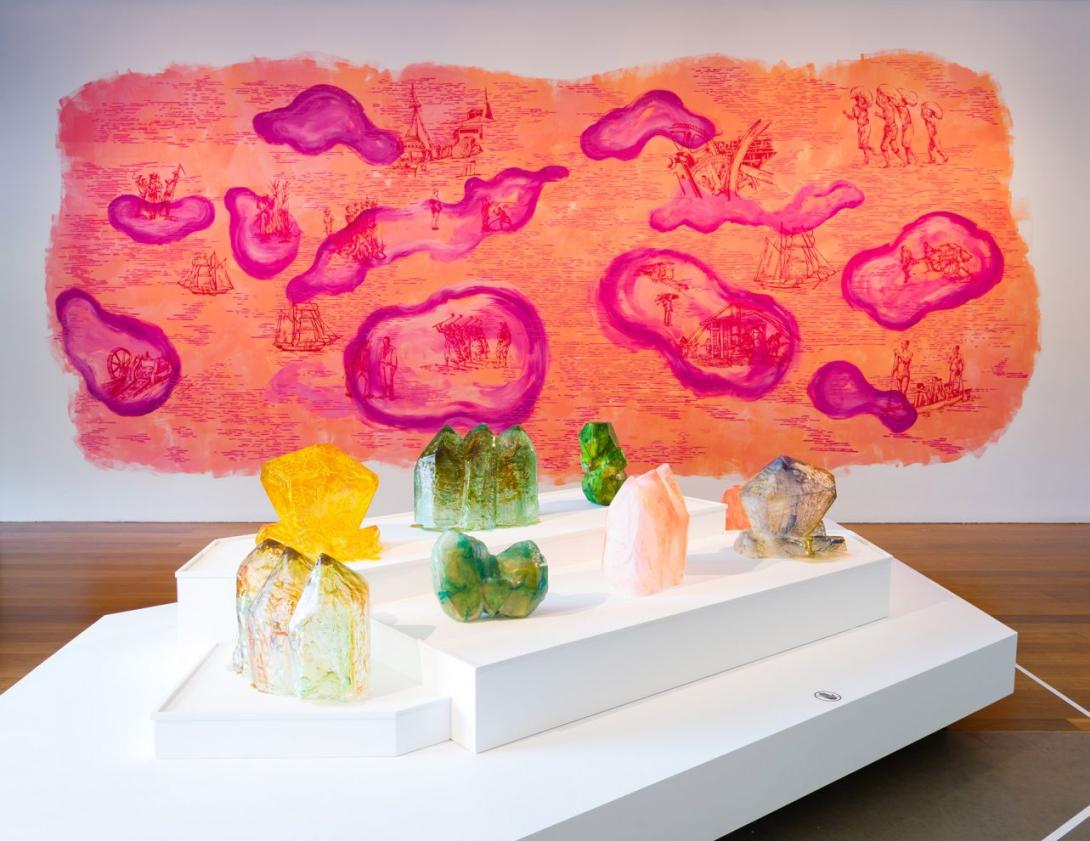Elia Nurvista
APT9
Born 1983 Yogyakarta, Indonesia
Lives and works in Yogyakarta, Indonesia
Elia Nurvista is a young Indonesian artist whose practice focuses on food production and distribution and its broader social and historical implications. Food in various forms — from the planting of crops, to the act of eating and the sharing of recipes — are Nurvista’s entry point to exploring issues of economics, labour, politics, culture and gender. Her practice is also concerned with the intersection between food and commodities, and their relationship to colonialism, economic and political power, and status. She runs Bakudapan, a food study group that undertakes community and research projects, and her social research forms the background of her individual projects, presented through mixed media installations, food workshops and group discussion. Her previous installations use a range of materials from crystalline sugar sculptures to sacks of rice, often incorporating video or mural painting and an element of audience interaction.

Elia Nurvista / Indonesia b.1983 / Sucker Zucker 2018 installed for APT9, GOMA, 2018 / Sculptures (sugar, food colouring and bio resin) and mural / © Elia Nurvista / Commissioned for APT9 / Photograph: Natasha Harth, QAGOMA
In her artworks, Elia Nurvista explores issues of economics, labour, politics, culture and gender through the production and consumption of food. In Sucker Zucker 2018, the theme is sugar — large, crystalline sculptures in bright, jewel-like colours appear like faceted and translucent clusters of diamonds. The similarities between the two are more than physical; both material extractions are associated with slavery and exploitation. Historically, the sugar industry precipitated some of the largest enforced migrations in the world, affecting Africa, the Americas, Asia and the Pacific. Slavery is now illegal; however, Nurvista argues that this exploitation continues today between global corporations and those countries that supply cheap labour and raw materials.
Despite its lack of nutritional value, sugar is the world's third most valuable crop (following cereals and rice). Recently, in Nurvista's home country of Indonesia, sugar has been at the centre of intense debate around the assertion of nationhood — the government has decreed that the country should be self-sufficient in sugar by 2019. Sucker Zucker raises questions of how food and its consumption define us and influence our values. As the artist has stated about this universal commodity: 'Behind its sweetness and beauty, there is a bitterness'.
In keeping with the experiential aspect of her practice, during APT9 Nurvista offered Sucker Zucker candies for sale through the Gallery Store for visitors to take home.
